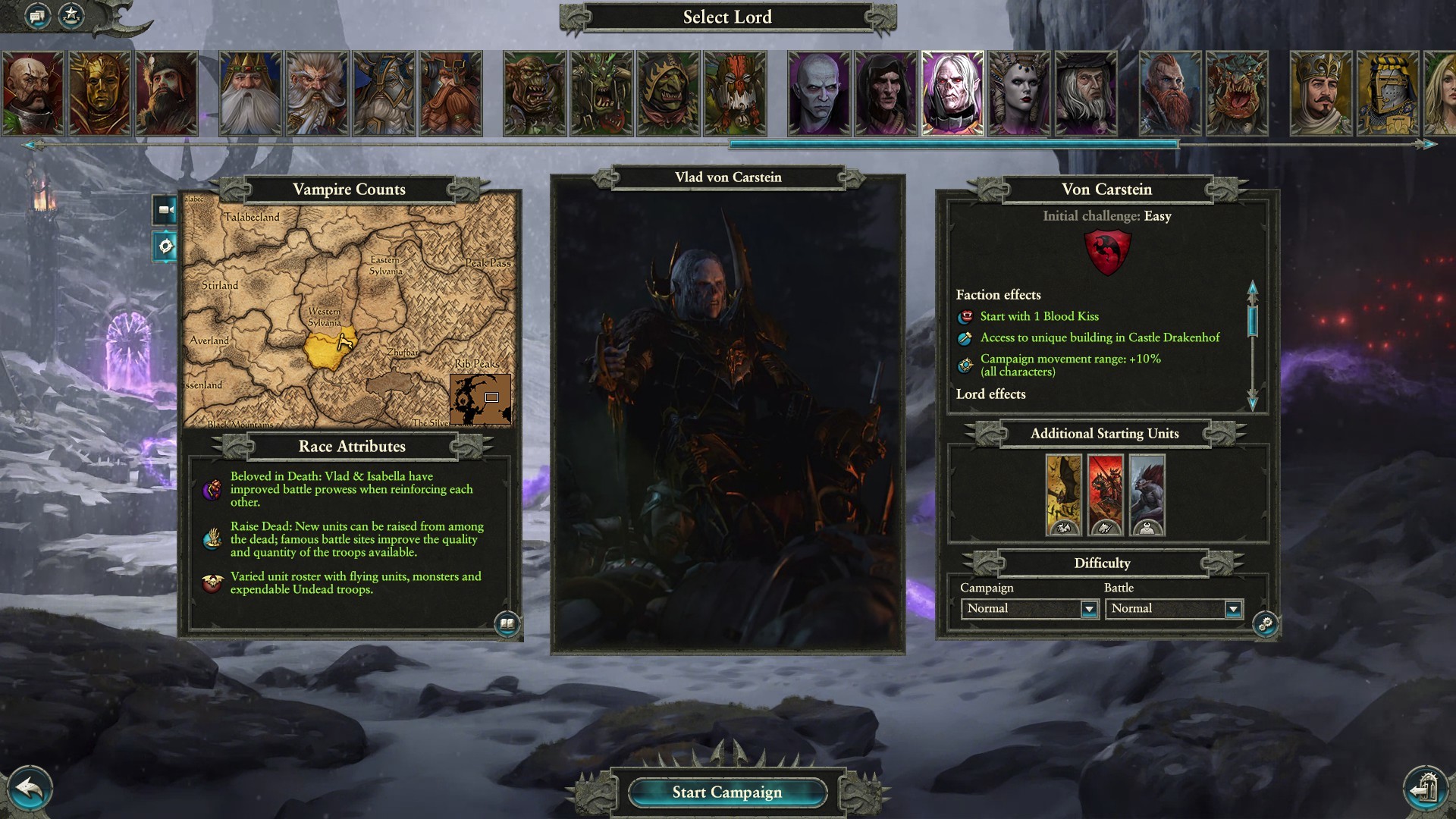
Moving in the 'march' method allows you to get to more distant places, but your armies will be winded until the next round. However, each stance (besides 'none') has its own advantages and disadvantages.


Each Lord starts with the 'none' stance, but it can be changed at any moment. It allows you to adapt movement to the situation on the map - this will allow you to get through a corrupted terrain, jump on the other side of a mountain, or to get faster to a specific place on the map. Note - the influence of terrain over your army can be checked by placing the mouse over the terrain.Ī movement stance can be selected by using the button located in the bottom left corner of the screen.Įach Lord can chose one of the movement stances. In case of Dwarves and Greenskins you can use the stance to move underground ("Use Underway"), which allows them to avoid contact with hostile terrain and obstacles (like mountains), but they can be intercepted while moving in that stance. In case of all of the factions it will be the "raiding" stance, but it has a disastrous influence on the province the army is moving through - it will decrease public order and/or relations with other factions. It can be avoided by using specific marching stances.

An army moving around an area like that will lose a portion of every unit each turn. This, in short, is limited to a single effect - losing units because of attrition. While moving your armies around the world, you will surely stumble upon terrains that have a specific influence on them. You can check the influence of the environment by placing the mouse over the terrain.


 0 kommentar(er)
0 kommentar(er)
